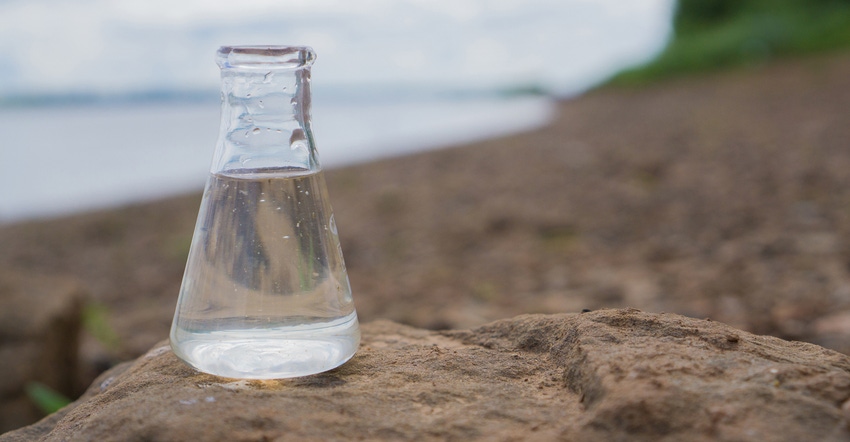
In its annual water quality monitoring report released this fall, the Minnesota Department of Agriculture’s Pesticide and Fertilizer Management Division noted that several pesticides were detected for the first time in water at levels found to be below health risk standards.
In 2020, a breakdown product of the fungicide chlorothalonil (4-hydroxychlorothalonil) and a breakdown product of the herbicide bentazon (bentazon AIBA) were detected for the first time in groundwater, said David Tollefson, MDA hydrologist with the Pesticide and Fertilizer Management Division. Both chemicals were found in less than 10% of the samples and at levels below the drinking water health reference values.
Seven pesticide compounds were detected for the first time in surface water. They, too, were found infrequently and at levels below health risk limits. Two of them, fipronil and cloransulam-methyl at maximum detections were 93% and 45% of the U.S. EPA benchmark, respectively. The other pesticide detections were well below the benchmarks.
Tollefson explained that annual water quality monitoring helps define long-term trends. MDA staff analyze groundwater and surface water samples for more than 180 compounds. Many compounds have been analyzed for at least a decade. New compounds are added annually following a formal review of sales information, chemical properties and environmental risk factors. The annual report summarizes all the results.
In 2020, new monitoring wells were in place in Olmstead, Todd and Redwood counties, he added.
In the 285-page report, Tollefson highlighted several areas:
• Five common pesticides detected. Those are acetochlor, alachlor, atrazine, metolachlor and metribuzin. Each has its own detailed section under the groundwater category in the report. Last year, acetochlor levels were slightly up in northwest Minnesota. However, overall levels are very low.
“Farmers are following best management practices,” he noted, helping to keep levels down. Alachlor’s registration in Minnesota was revoked in 2016; accordingly, there is a downward trend in detection data.
With atrazine, four degradates and the parent itself are monitored. All were detected at low levels in 2020. Tollefson noted that legacy use in degradates may be causing levels to interfere with decreasing trends.
Metolachlor was found in all regions and showed some degradation, depending on location. Detection levels trended up in northwest, central and southeast Minnesota — but again, below health risk limits.
Metribuzin was found in central Minnesota groundwater samples, again at low levels.
• Other pesticides on the groundwater watch list. In central Minnesota, with its sandy soils, MDA is keeping an eye on specific compounds including bentazon, clothiandin, dimethenamid, imazamox, imidacloprid and thiamethoxam. A few compounds monitored are neonicotinoids, and are of concern due to potential impact on pollinators.
Surface water monitoring
Surface water monitoring is conducted at 55 river locations across the state, with most in agricultural areas, Tollefson said. Eight to 18 samples are pulled per year from May through August. Tollefson acknowledged that the time frame is when runoff and storm events usually take place.
“We are capturing the worst-case scenario,” he said. “We want to know the worst.”
MDA tracks several pesticides of concern in surface waters including atrazine, acetochlor, chlorpyrifos, clothianidin and imidacloprid, the latter two being neonicotinoids.
In general, atrazine is a positive story, he noted, with most samples showing levels below state standards. Both neonics, however, showed increasing levels of compounds, prompting questions of seed treatments leaching into river waters.
Given the drought in 2021, Tollefson added that MDA expects to see a drop in numbers in the next report.
“We’ll have to wait and see,” he said. “The intent of monitoring is to help manage pesticide [levels] and what BMPs [best management practices] to develop and promote.”
To read the full report, visit MDA’s website at mda.state.mn.us/pesticide-monitoring-reports, and under “Annual Reports and Data Sets,” click on “2020 Water Quality Monitoring Report.”
About the Author(s)
You May Also Like






